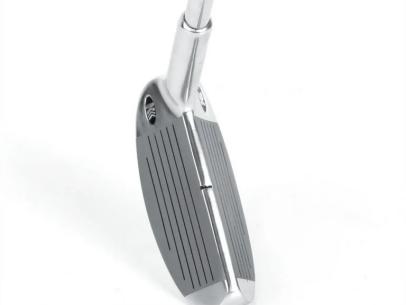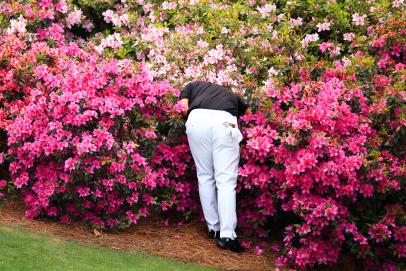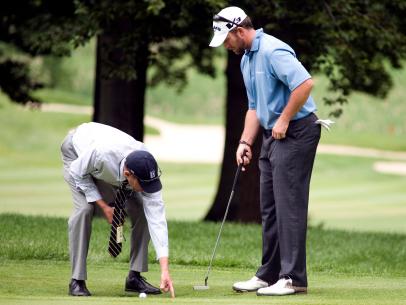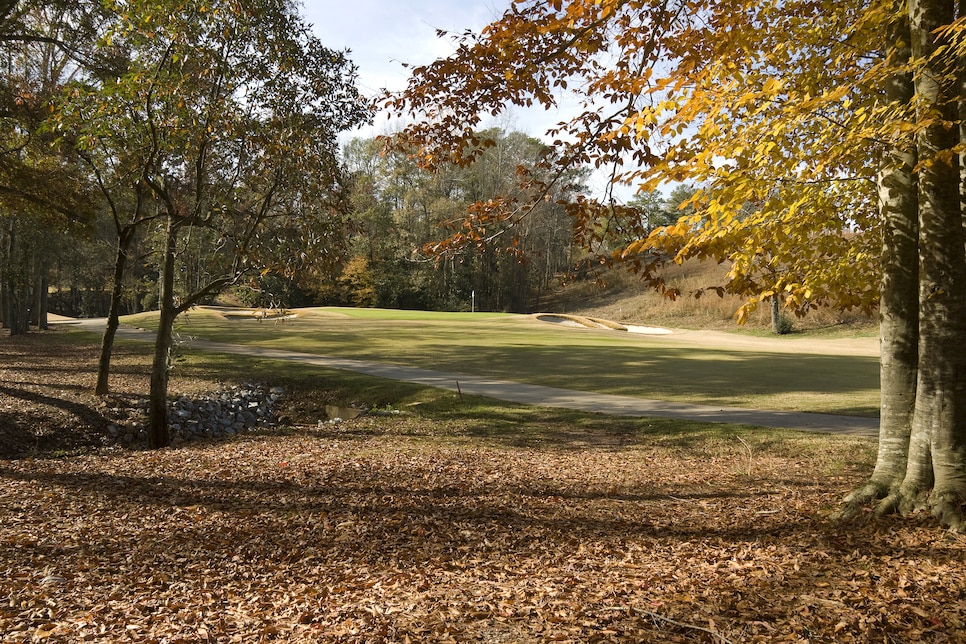Yes, the ‘leaf rule’ is actually a real thing. Here’s what the rules say about it – Australian Golf Digest

- by Admin
- September 23, 2024

Each fall, golfers in northern climates invoke the “leaf rule” to lobby for a free drop when they can’t find their ball under a pile of foliage. Some use it as a concession to appease a frustrated opponent. Others claim it as justification for avoiding their own lost-ball penalty, emphatically asserting the Rules of Golf supports it.
But is it an official rule? Yes, in some instances. It takes some explaining.
In everyday use (irrespective of what the official rules dictate), when golfers lose a ball that clearly came to rest in a pile of leaves, they often take a free drop rather than incurring a penalty and replaying the previous shot. On the surface, this “leaf rule” is logical. Why should a golfer who can’t find their ball in a dense pile of leaves just off the fairway receive the same penalty as one who just sliced one out-of-bounds?
More From Golf Digest Rules Review Rules of Golf Review: My buddy still uses a ‘chipper’ club. Are they legal?  Golf Digest Logo The 10 rules we choose to ignore in everyday golf
Golf Digest Logo The 10 rules we choose to ignore in everyday golf  Rules of Golf It’s called the ‘2-by-2 rule.’ Here’s how it can save you shots around the green
Rules of Golf It’s called the ‘2-by-2 rule.’ Here’s how it can save you shots around the green
Unfortunately, in many cases the rules are not so lenient. Rule 18.2 states that “your ball is lost if not found in three minutes after you or your caddie begin to search for it.” And, according to the same rule, when a ball is lost, you must take stroke-and-distance relief (adding one penalty stroke) and play from the spot of your previous shot.
RELATED: I once despised the stroke-and-distance penalty, but now I see the light
So where is this “leaf rule?” Proponents of the free drop often cite Rule 16.1, which allows a player to take free relief from a ball not found when it is “known or virtually certain” it came to rest in or on an “abnormal course condition.” This is where things get a little gray. Leaves are considered an abnormal course condition only when they are intentionally piled for removal outside of a penalty area. If that’s the case, and you either saw the ball enter the leaves or are virtually certain it did, then you are entitled to a free drop by finding the nearest point of complete relief and dropping within one club-length, no closer to the hole.
A more common scenario is when leaves are scattered or pile up naturally. They are not considered an abnormal course condition. They are simply loose impediments, so you are not entitled to free relief even if you’re sure your ball is lost under them.

Getty Images
However, this is where the “leaf rule” can save you. You may be entitled free relief under Model Local Rule F-14, which a tournament committee or course staff can choose to implement.
“At certain times of the year, piles of loose impediments such as leaves, seeds or acorns may make it difficult for a player to find or play his or her ball. A Committee can choose to treat such piles of loose impediments in the general area or in a bunker as ground under repair from which free relief is allowed under Rule 16.1.”
RELATED: 13 Rules of Golf you should be taking advantage of to shoot lower scores
Long story short? Make sure to check with the golf course staff or tournament committee (if you’re playing in competition) before heading out for an end-of-the-year round to see if they’re implementing this local rule. If it’s being used, you’re entitled to free relief from a ball lost in leaves. If not, you’re out of luck.
And, if you’re one of the passionate defenders of the leaf rule, you now have your argument for convincing your head pro to adopt the rule for your fall member-guest. Or, at least, to point to when your buddies question why you’re campaigning for a free drop.
This article was originally published on golfdigest.com
The Latest News
-
September 23, 2024RBA relying on outdated theory about inflation and employment
-
September 23, 2024It’s no surprise who most European Ryder Cuppers are rooting for at the Presidents Cup (if they’re watching) – Australian Golf Digest
-
September 23, 2024A survival guide to your nightmare hole – Australian Golf Digest
-
September 23, 2024Pop star Katy Perry and Australian Football League finally reach agreement on song choice for her AFL Grand Final performance
-
September 23, 2024Golf prodigy Jeffrey Guan suffers serious eye injury after being hit in the face by a ball at pro-am event in Australia





